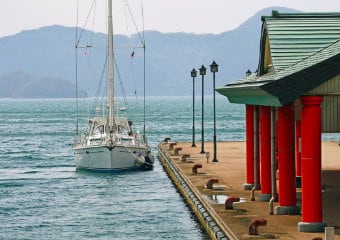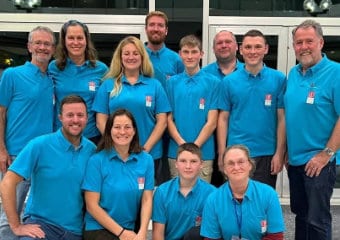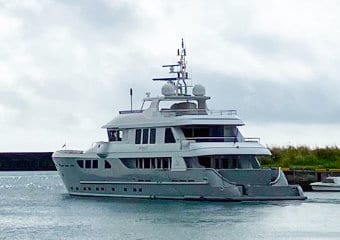Circumnavigating Japan: Entering from the South

Japan is such a big country and with such a wonderful diversity of scenery that I think it is well worth doing a full circumnavigation, which typically takes three years, or longer (looking at the charts and calendar, one would think it could be done in two years, but, in fact, weather and visa restrictions make that very difficult).
There are many different ways to do a Japan circumnavigation, depending on when and where one enters the country. I will present three possible circumnavigation routes, with the first being when entering from the south.
For those coming from the south, would-be Japan circumnavigators spend six months to explore the Ryukyu Islands, the west coast of Kyushu, and the Seto Inland Sea. That's a leisurely pace that gives enough time to get off the beaten track, including exploring the Goto Islands and the Amakusa area of western Kyushu, going to Tsushima (near Korea), and visiting some of the Seto Inland Sea's lesser-known islands.
In the following year, they go up the Sea of Japan coast, around Hokkaido, and down the Pacific Coast back to the Seto Inland Sea. In contrast to year one, that is a very busy and demanding schedule. Circumnavigating Hokkaido is probably the biggest cruising challenge in Japan, one rarely undertaken even by Japanese sailors - the ports are rough, the fishing nets numerous, and the bone-chilling fog in eastern Hokkaido thick and endless. Going south along the northeast coast of Honshu is also difficult, not just because of continued fog but also because many of the ports have not yet been fully rebuilt after the 2011 tsunami, so knowing where to moor is difficult. Dodging cargo ships and large fishing boats adds to the excitement. One definitely heaves a sigh of relief after returning to the calm and safety of the Seto Inland Sea.
In year three, they go up the Sea of Japan coast again (visiting places they missed the first time), to Hokkaido, and beyond. Or they explore more of Shikoku, Kyushu, and the Ryukyu Islands before proceeding back south to SE Asia or the South Pacific.
In addition to places highlighted in other parts of this Japan Cruising Routes series, here are some of the special places that cruisers can visit during this circumnavigation.
Amakusa
In Amakusa, an area of inland seas in western Kyushu, one can see traditional utase fishing boats. Dating back 400 years, they gently drift downwind as their nets gather up shrimp and various types of fish.

Tsushima
Tsushima's location, about half way between Japan and Korea has been a blessing and a curse. On the positive side, throughout most of its history it benefited from being the stepping stone for the flow of goods, wealth, and knowledge between Asia and Japan. On the negative side, though, it was the departure point for Kublai Khan's two failed invasions of Japan in the late 13th century and for Japan's two failed invasions of Korea in the late 16th century. Between those two periods, Tsushima was the location of the largest base of Wako pirates, who raided the coastal communities and shipping of Korea, China, and Japan and who were the targets of regular attempts by the Korean and Japanese military to destroy them. More recently, the 1905 naval Battle of Tsushima marked not only the first time that a "white country" (Russia) was defeated by a "non-white country" (Japan) but also the emergence of Japan as a major player on the world stage. Today, cruisers can enjoy the peace and quiet of Aso Bay, in the middle of Tsushima and with numerous islands, inlets, and peninsulas.

Fukaura
In the declining fishing port of Fukaura, on the northwest Honshu coast, there is a small museum about the history of Kitamae boats that bought and sold goods along the way from Osaka, out the Seto Inland Sea, and up the Sea of Japan coast to southwest Hokkaido. They plied their trade from the early 18th to early 20th centuries and played an important role in the economic development of northwest Honshu and Hokkaido. For Fukaura, like many of the small ports along the Sea of Japan coast, the Kitamae era was its "Golden Age."

Shimoda
Heading south along the Pacific coast, cruisers will want to stop at Shimoda, on the southeast tip of the Izu Peninsula. It not only is a convenient, well-protected place to stop after crossing the mouth of Tokyo Bay and has a nice visitor's dock, but it also has a special place in Japanese history. When Commodore Perry came to Japan in 1853-54, he visited Shimoda, and Shimoda was the first Japanese port opened to foreign trade as part of the relaxation of Japan's isolation policy (although it was closed a few years later and remains a Closed Port to this day).

Japan Cruising Routes
To learn how Konpira Consulting can help you enjoy the wonders of Japan's oceans, please feel free to contact us for more information.





